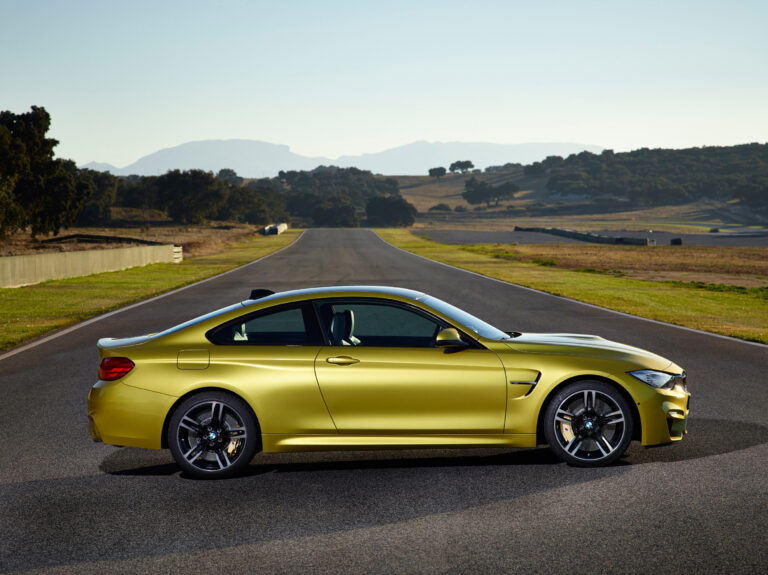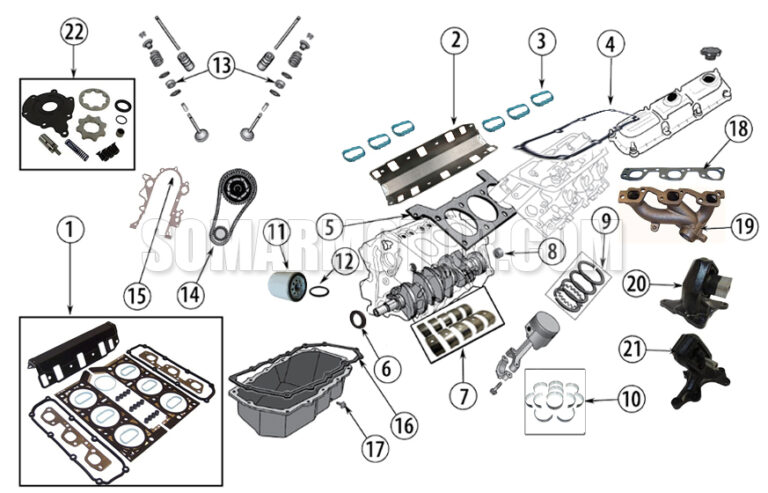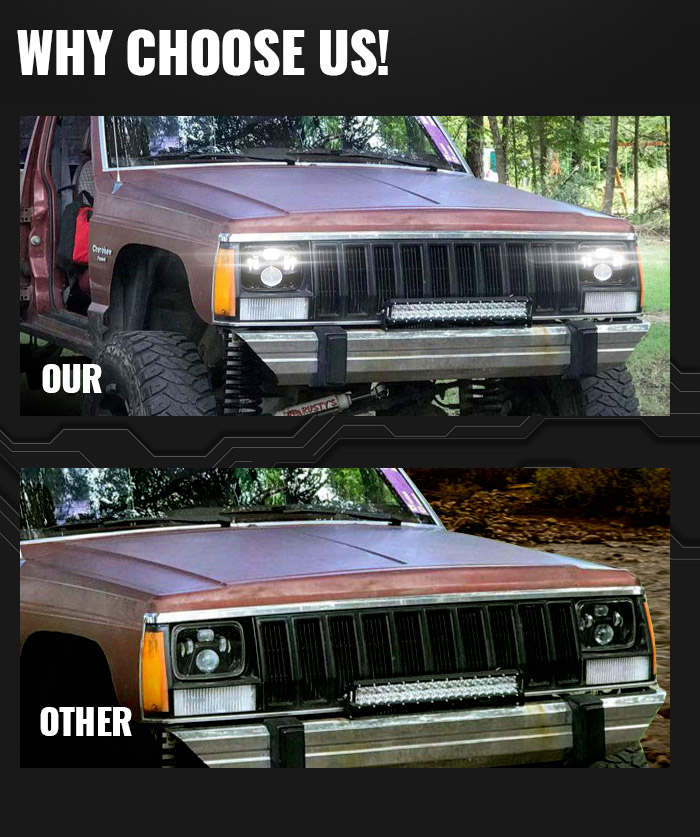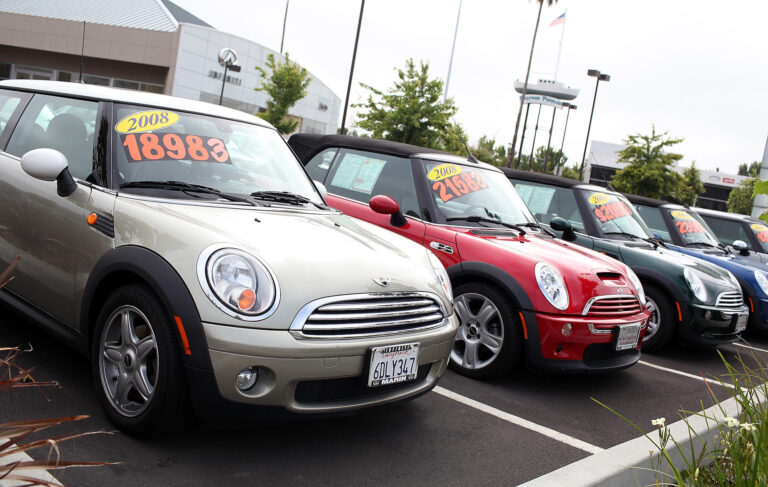1955 Willys Jeep For Sale: A Comprehensive Buyer’s Guide to Owning a Legend
1955 Willys Jeep For Sale: A Comprehensive Buyer’s Guide to Owning a Legend jeeps.truckstrend.com
The Enduring Allure of the 1955 Willys Jeep
Few vehicles embody the spirit of rugged American utility and adventure quite like the Willys Jeep. Born from the crucible of World War II, these humble but immensely capable machines transitioned seamlessly into civilian life, becoming the progenitors of the modern SUV. The year 1955 holds a special place in Willys history, marking a period of significant evolution with popular models like the iconic CJ-5 and the distinctive CJ-3B still in production, alongside the robust military M38A1. For enthusiasts and collectors, a "1955 Willys Jeep For Sale" isn’t just an advertisement for a vehicle; it’s an invitation to own a piece of automotive history, a testament to enduring design, and a gateway to a unique driving experience. Whether you’re seeking a project, a trail rig, or a show-quality classic, understanding the nuances of these vintage Jeeps is crucial to making an informed purchase.
1955 Willys Jeep For Sale: A Comprehensive Buyer’s Guide to Owning a Legend
Understanding the 1955 Willys Jeep Lineup
The 1955 model year was a fascinating crossroads for Willys-Overland, offering a mix of established and emerging designs. When considering a 1955 Willys Jeep for sale, you’re primarily looking at three key variants, each with its own character and historical significance:
The Civilian Jeep (CJ) Series
-
Willys CJ-3B ("High-Hood" Universal Jeep): Introduced in 1953, the CJ-3B was a direct evolution of the flat-fender CJ-2A and CJ-3A. Its most distinguishing feature is its taller hood, necessary to accommodate the new "Hurricane" F-head four-cylinder engine. This engine, with its overhead intake valves and side exhaust valves, offered more power than its predecessor (63 horsepower vs. 60), making the CJ-3B a more capable workhorse and recreational vehicle. It retained the classic flat-fender look, short wheelbase, and nimble handling that made early CJs famous. For buyers, the CJ-3B represents a blend of classic aesthetics with a slightly more robust powertrain.

Willys CJ-5: The CJ-5, introduced in late 1954 as a 1955 model, was a significant departure from its predecessors and arguably the most iconic civilian Jeep design. Based on the military M38A1, it featured a longer wheelbase (81 inches vs. 80 inches for the CJ-3B), a more rounded body, and larger fenders. This design proved incredibly popular and long-lived, remaining in production until 1983. Early 1955 CJ-5s were primarily powered by the Hurricane F-head engine. The CJ-5 offered improved ride comfort and stability over the earlier CJs, making it a favorite for off-roading and general utility. Its enduring popularity means a wider availability of parts and a larger community.
The Military Jeep
- Willys M38A1 (MD): While primarily a military vehicle, many M38A1s found their way into civilian hands, often through surplus sales. The M38A1 was the direct predecessor and design basis for the CJ-5. It shared the same distinct rounded body and fenders but featured military-specific enhancements like a 24-volt electrical system, a waterproof ignition, heavy-duty suspension, and blackout lights. If you encounter a "1955 Willys Jeep for sale" that looks like a CJ-5 but has military features, it’s likely an M38A1. These are highly sought after by military vehicle collectors and offer exceptional ruggedness, though their 24V system can be a unique challenge for civilian parts.

Understanding these distinctions is crucial, as they impact performance, parts availability, and ultimately, value.
Why Invest in a 1955 Willys Jeep? Benefits of Ownership
Owning a 1955 Willys Jeep is more than just possessing an old vehicle; it’s an experience filled with unique benefits:
- Historical Significance: You’re owning a tangible piece of post-war American history, a vehicle that helped shape modern off-roading and utility.
- Robust, Simple Mechanics: These Jeeps were built for simplicity and durability. Their mechanical components are straightforward, often making them easier for the home mechanic to repair and maintain compared to modern vehicles.
- Unmatched Off-Road Capability (for its era): With their short wheelbases, high ground clearance, and robust 4×4 systems, 1955 Willys Jeeps are surprisingly capable off-road, especially on tight trails where modern, larger vehicles struggle.
- Strong Community and Parts Availability: A passionate community of Willys enthusiasts exists worldwide. Numerous specialized vendors offer reproduction parts, and many original components can still be sourced, ensuring your Jeep can be kept running.
- Unique Driving Experience: Driving a vintage Willys is an unfiltered experience. You feel connected to the road (or trail) in a way modern vehicles simply don’t allow. It’s a head-turner and a conversation starter wherever you go.
- Potential for Appreciation: Well-maintained, original, or professionally restored 1955 Willys Jeeps, particularly the more desirable variants, can hold or even increase in value over time, making them a potential investment.
Navigating the Market: How to Buy a 1955 Willys Jeep
Finding the right 1955 Willys Jeep for sale requires patience and diligence.
Where to Look:
- Online Marketplaces: Websites like eBay Motors, Craigslist, Facebook Marketplace, and specialized classic car sites (e.g., Hemmings, ClassicCars.com) are common starting points.
- Specialized Forums & Clubs: Willys and Jeep enthusiast forums often have classified sections. Joining local or national clubs can also open doors to private sales.
- Classic Car Dealers & Auctions: Reputable classic car dealers occasionally have vintage Jeeps. Auctions (online and live) can also be a source, but buyer beware – thorough pre-inspection is critical.
- Word-of-Mouth: Let friends, family, and local mechanics know you’re looking. Hidden gems often surface this way.
What to Look For: A Buyer’s Checklist
When inspecting a 1955 Willys Jeep for sale, focus on these key areas:
- Rust, Rust, Rust: The biggest enemy of old steel. Check:
- Frame: Look for cracks, welds, and severe corrosion, especially around spring hangers and body mounts.
- Body Tubs: Floors, hat channels (underneath the floor), cowl, and rear wheel wells are common rust spots.
- Fenders & Grille: Check for rot and shoddy repairs.
- Engine & Drivetrain:
- Engine: Does it run? Listen for knocking, excessive smoke (blue for oil, black for rich, white for coolant). Check for oil leaks. Ideally, get a compression test.
- Transmission & Transfer Case: Shift through all gears (including 4WD high/low) to check for grinding or popping out of gear. Look for fluid leaks.
- Axles: Check for leaks around differential covers and wheel ends.
- Suspension & Steering:
- Springs & Shocks: Look for broken leaves, worn bushings, or collapsed shocks.
- Steering: Check for excessive play in the steering wheel. Inspect tie rods, drag link, and steering box for looseness or leaks.
- Electrical System:
- Original 6V vs. 12V Conversion: Many civilian Jeeps have been converted to 12V for easier starting and accessory compatibility. Ensure the conversion was done properly. Military M38A1s are 24V; converting them can be costly.
- Wiring: Look for frayed wires, bare spots, or amateurish splices.
- Lights & Gauges: Test all lights, turn signals, horn, and gauges (though some may not work on older vehicles).
- Documentation: A clear title is paramount. Service records or a documented history of ownership/restoration add significant value.
Test Drive Essentials:
- Does it start easily?
- Does it track straight?
- Are the brakes effective? (Original drum brakes are often adequate but not modern car powerful).
- Does the transmission shift smoothly?
- Does the 4WD engage?
- Listen for unusual noises from the engine, drivetrain, or suspension.
For any significant purchase, a pre-purchase inspection by a mechanic familiar with vintage vehicles is highly recommended.
Important Considerations for Ownership and Restoration
Owning a 1955 Willys Jeep is a commitment. Here’s what to consider:
- Parts Availability: While many parts are available (especially for CJ-5s), specialized components for early CJ-3Bs or M38A1s can be harder to source and more expensive. Reproduction quality varies.
- Maintenance & Repair: These are not complex vehicles, but they require regular maintenance. Knowing how to turn a wrench or having a trusted vintage mechanic is essential.
- Restoration Levels:
- "Driver Quality": Functional, presentable, but not perfect. Ideal for regular use.
- "Partial Restoration": Key systems addressed, some cosmetic work. A good balance of cost and enjoyment.
- "Frame-Off Concourse": Every nut and bolt restored to original factory specifications. Very expensive, typically for show vehicles.
- Cost of Ownership: Fuel efficiency is low. Insurance can be affordable with classic car policies. However, unexpected repairs or the desire for upgrades/restoration can add up quickly.
- Safety Upgrades: Vintage brakes and lack of modern safety features mean these Jeeps require careful driving. Many owners opt for upgrades like disc brakes, seatbelts, and brighter lighting for enhanced safety on modern roads.
Tips for Buyers and Sellers
For Buyers:
- Define Your Goal: Are you looking for a daily driver, a weekend trail rig, a show vehicle, or a restoration project? This will dictate your budget and search criteria.
- Set a Realistic Budget: Factor in the purchase price, potential repairs, restoration costs, transport, and registration.
- Do Your Homework: Research the specific model you’re interested in. Join forums and ask questions.
- Be Patient: The right Jeep might not appear immediately. Don’t rush into a purchase.
- Negotiate Respectfully: Be prepared to walk away if the price isn’t right or the seller is unwilling to negotiate.
For Sellers:
- Be Transparent: Honesty about the vehicle’s condition, known issues, and modifications builds trust.
- High-Quality Photos: Provide clear, well-lit photos from multiple angles, including any problem areas.
- Detailed Description: List all specifications, recent maintenance, known history, and any unique features.
- Gather Documentation: Have the title, service records, and any restoration receipts readily available.
- Price Competitively: Research similar Jeeps in comparable condition. Overpricing will deter buyers; underpricing leaves money on the table.
- Highlight Unique Selling Points: Originality, rare features, or a compelling story can increase appeal.
Price Guide: 1955 Willys Jeep For Sale
The price of a 1955 Willys Jeep can vary dramatically based on its specific model (CJ-3B, CJ-5, M38A1), condition, originality, and location. The following table provides estimated price ranges:
| Condition Category | Description | Estimated Price Range (USD) |
|---|---|---|
| Poor / Parts | Non-running, heavily rusted, incomplete, or requiring full frame-off restoration. Primarily valuable for salvageable components or as a very ambitious project. | $3,000 – $7,000 |
| Fair / Project | Runs but needs significant mechanical work (engine, transmission, brakes) and extensive bodywork. May be drivable but not roadworthy or reliable. A good starting point for a dedicated enthusiast. | $7,000 – $15,000 |
| Good / Driver | Mostly solid and roadworthy. Runs reliably, brakes work, 4WD functions. May have minor rust, older paint, and some non-original parts. Suitable for regular driving and light off-roading, or as a basis for a rolling restoration. | $15,000 – $25,000 |
| Excellent | Well-maintained, largely original, or professionally restored to a high standard. Minimal rust, good paint, reliable mechanicals. Shows well and is ready for enjoyment. May have some tasteful, period-appropriate upgrades. | $25,000 – $40,000 |
| Concours / Show | Flawless, professionally restored to original factory specifications, or exceptionally well-preserved original. Museum-quality, often winning awards. Every detail is correct and immaculate. | $40,000 – $60,000+ |
Note: Prices are estimates and can fluctuate based on market demand, specific model (CJ-5s often command higher prices than CJ-3Bs in similar condition due to wider appeal), rare options, and geographical location. Military M38A1s can also command premium prices, especially if they are well-preserved and still retain their military-specific features.
Frequently Asked Questions (FAQ)
- Q: Is it hard to find parts for a 1955 Willys Jeep?
- A: Generally, no, especially for common wear items and body panels for CJ-5s. Many reproduction parts are available from specialized vendors. However, specific or very rare original components might require diligent searching or fabrication.
- Q: What’s the difference between a CJ-3B and a CJ-5?
- A: The CJ-3B has a "high hood" to accommodate the Hurricane F-head engine and retains the earlier flat-fender body style. The CJ-5 has a more rounded, longer body, larger fenders, and a more modern (for its time) appearance, being based on the military M38A1. Both often used the same Hurricane engine in 1955.
- Q: Can I daily drive a 1955 Willys Jeep?
- A: While technically possible, it’s not recommended for most people. They lack modern safety features, are slow on highways, and require more frequent maintenance. They are best suited for recreational use, light off-roading, or as a weekend cruiser.
- Q: Are 1955 Willys Jeeps good investments?
- A: For a well-maintained, original, or professionally restored example, they can hold or increase in value. However, a neglected or poorly restored Jeep will likely be a financial drain. It’s an investment in enjoyment and history first, and financial return second.
- Q: What kind of fuel do they use?
- A: Most 1955 Willys Jeeps (with their original engines) run fine on modern regular unleaded gasoline. They don’t typically require premium fuel or lead additives.
- Q: Are they safe to drive on modern roads?
- A: They are inherently less safe than modern vehicles due to their age, lack of crumple zones, airbags, seatbelts (often added aftermarket), and less powerful brakes. Defensive driving, awareness of their limitations, and potential safety upgrades (e.g., disc brakes, three-point seatbelts) are highly recommended if you plan to drive on public roads.
Conclusion: Driving History Home
A "1955 Willys Jeep For Sale" offers a unique opportunity to own a piece of American ingenuity and a vehicle that shaped generations of outdoor enthusiasts. Whether you’re drawn to the classic lines of the CJ-3B, the iconic utility of the CJ-5, or the rugged heritage of the M38A1, each variant promises a connection to a simpler, more adventurous time. While ownership comes with its considerations – from rust prevention to understanding vintage mechanics – the rewards of piloting such a historically significant and charismatic machine far outweigh the challenges. With careful research, a thorough inspection, and a passion for automotive history, you can drive home not just a vehicle, but a legend.






